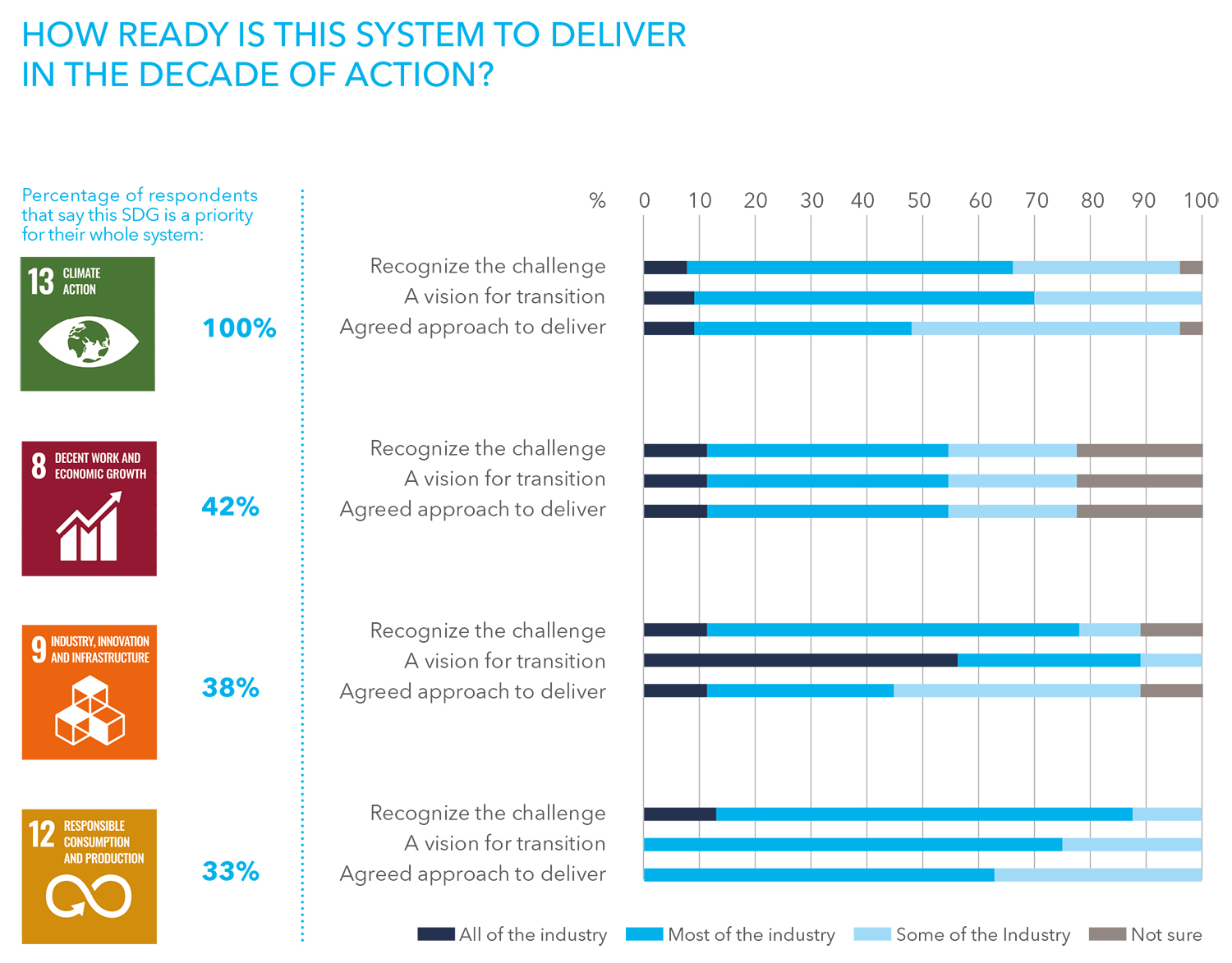
Business action is aligned with the SDGs, but the level of ambition must be raised
At 75 per cent, healthcare and life sciences has the lowest percentage of all systems taking action on the SDGs. One of the main problems identified relates to translating the SDGs into business strategy and practices and having clear business-relevant metrics.
Products and services supporting the SDGs
Target setting relating to the SDGs is strong within this system, but the system falls behind others for developing products and services to support the SDGs.
Social issue commitment varies
Goal 3: Good Health and Well-being, scores highly across all areas, as it reflects this system’s core purpose. It is surprising that for this critical SDG, recognition of the challenge and a vision for transition by "all" or "most" of the system only stand at 66 per cent and 70 per cent respectively.
Sustainable transition needs
The SDGs are about making the world a better place, something that is at the foundation of healthcare and life sciences. The system needs to refocus on a vision to deliver Goal 3 and ways of measuring impact and address material environmental issues and sustainable production. Multi-stakeholder collaboration, scaling of digital solutions and science-informed metrics are key levers for the transition.
